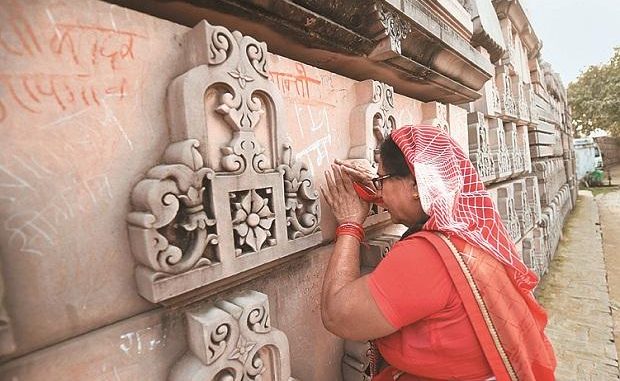
The violence stirred memories of the bloodshed witnessed after the country was divided in 1947 into India and Pakistan
Bloomberg Last Updated at November 9, 2019 02:30 IST
To Hindus, it’s the revered birthplace of Ram. To Muslims, it’s the site of a 16th century mosque that was razed in 1992 by Hindu religious volunteers, or kar sevaks. After a long legal fight — and bloodshed — the Supreme Court is set to rule on which of the country’s biggest religions owns the site.
What’s it about?
Ostensibly a plot of land of 2.77 acres in Ayodhya. For more than seven decades, right-wing Hindu campaigners have been pushing to build a temple there for Ram, who they believe was born on the site where the Mughals later built the Babri mosque.
What’s the history?
During colonial rule, the British kept the site divided, permitting Muslims to pray inside the mosque and Hindus to worship outside. In 1949, Hindu activists broke into the mosque and placed an idol of Ram inside.
Anticipating violence, the government locked the main gate. Lawsuits were then filed by religious groups seeking control. In the 1980s, the Bharatiya Janata Party (BJP) launched a campaign to build a temple to Ram there (Modi was among the organisers).
On December 6, 1992, a Hindu mob gathered and, in the presence of senior BJP leaders, demolished much of the mosque. That provoked nationwide riots in which more than 2,000 people, mostly Muslims, lost their lives. On March 12, 1993, more than 250 people were killed in retaliatory bombings in Mumbai.
Why is this still being talked about?
It brought religious identity back to the center of Indian politics. The violence stirred memories of the bloodshed witnessed after the country was divided in 1947 into India and Pakistan.
What’s before the Supreme Court?
The Allahabad High Court in 2010 ordered the disputed land be split into three parts, two going to Hindu groups and the third to the Sunni Waqf Board, representing Muslims. All three parties appealed to the Supreme Court. (Meanwhile, a fourth group that says it represents Shias joined the case, asking for the land to go to the Hindus.) Final hearings began in August and ended October 16.
What’s Modi’s position?
A verdict in favour of building a Ram temple would be touted as a political victory for Modi, who was easily re-elected to a second term in 2019. The BJP has included a call for that in every election manifesto since 1996. But Modi has also sought to restrain some of the louder voices in his party. At a rally in September, Modi called on them to have faith in the Supreme Court and the Constitution.
“For Lord Ram’s sake, close your eyes and have reverence in the judicial system of the country,” Modi said.
The Rashtriya Swayamsevak Sangh and the Vishva Hindu Parishad canceled all public events in November and decided against holding celebratory processions if the verdict goes in favour of the Hindus, to avoid provoking sectarian violence.
What’s the bigger picture?
Recent government decisions have been perceived to be taking a tougher stance with minorities. In Kashmir political rivals to the BJP remain under detention and communication restrictions have been in place since August 5. Modi’s government has scrapped autonomy held by Jammu & Kashmir and is pushing for a national citizens registry in Assam. Home Minister Amit Shah wants to broaden the registry plan. There’s also a push for a controversial uniform civil code.
First Published: Sat, November 09 2019. 02:30 IST
read the full story about Ayodhya case: Supreme Court is about to settle a 500-year-old dispute
#theheadlines #breakingnews #headlinenews #newstoday #latestnews #aajtak #ndtv #timesofindia #indiannews
